Speaker
Description
Air pollution significantly impacts human health, reducing the quality of life. This study analysed free radicals in pollen, inflorescences, and associated soil samples. Free radicals are formed during plant metabolic processes, such as photosynthesis, and are influenced by environmental factors like pollution and various forms of radiation. The radicals can be harmful or advantageous to human health, depending on the concentration and type. Understanding free radical dynamics in plants and their correlation with environmental conditions helps to understand the potential impact on human health.
The current study involves the collection of soil, inflorescence, and pollen samples from Ulmus, Populus, Salix, Corylus, Alnus and Betula in urban and rural areas across Latvia during the plant flowering season. Sample preparation (including emptying of florescence from pollen) was performed at the Laboratory of Atmospheric Processes and Aerobiology of LU, while electron paramagnetic resonance (EPR) spectroscopy for free radical analysis occurred at the Latvian Institute of Organic Synthesis.
The EPR spectra identified Fe^+3 and Mn^+2 signals alongside organic free radicals. Weak intensity signals with microstructure in low magnetic fields were observed. The study primarily analysed organic free radicals, with typical g-values ranging around 2.006 ± 0.002. The concentration of organic radicals varied significantly among pollen samples from different tree species, with the highest concentration in Salix and Ulmus pollen and the lowest in poplar pollen. Similar concentrations were found in Corylus, Alnus, and Betula pollen.
Betula samples from 15 different sites were analysed, revealing slight differences in the concentration of organic radicals in birch pollen. However, end-of-flowering samples showed lower concentrations compared to start-of-flowering pollen samples. More radicals were observed in empty inflorescence than in pollen. A weak additional signal with g=2.0033 was recorded in some pollen and/or empty inflorescence, also present in all soil samples, suggesting the presence of silicon or carbon oxide radicals related to ionising radiation.
The results have shown the presence of various free radical particles in pollen and florescence, influenced by external environmental factors. Further studies will be performed to obtain more complete results.

